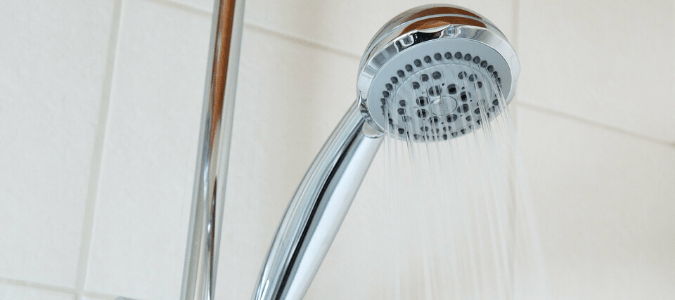Water is part of our everyday lives, so we often don’t pay much attention to it. But, it is important to find out if the water in your home is clean and safe. It should be free of chlorine, lead and other impurities.
Homeowners on municipal water should receive a Confidence Consumer Report for their water’s quality. You can contact your local water supplier if you are not getting your annual water quality report. You can also test your water yourself. Doing so will take a little effort, but your body will thank you later.
If you don’t know how to test water quality, here is everything you need to know about the process.
How To Use a Water Home Testing Kit
If you are worried about contaminants in your water, a home testing kit can provide accurate results. They come in various forms, depending on what you are testing for. They can be powders, strips or a combination of both. Here is how to use them.
Determine the Water Source You Want To Test
The first step is to identify what kind of water source you are working with because that will determine the type of testing kit you should get. If you want to test your area’s drinking water, you can go for the basic one that can detect the usual contaminants like chlorine and lead. But if you are examining well water, look for a more comprehensive kit.
Select a Testing Method
Test strips are the most common way to check your water at home. Not only are they affordable, but they are also fast and easy to use. Instructions will differ per kit, but here is how you use them in general:
- Fill the test container with sample water.
- Dip a strip inside and swirl the container.
- Let the strip rest in the water for a few minutes as you wait for the results.
- Take the strip out of the container and compare its color to the kit’s color chart.
Test strips can identify the contaminants in your water and their concentration. However, the drawback is that they are less precise than other methods. They only provide a range of results instead of specific numbers.
You can use powder kits if you want a more accurate way to test your water at home. They are more effective in detecting bacteria such as E.coli. Again, the process varies per brand, but here are the general instructions:
- Fill the bottle of powder with water up to the indicated level.
- Shake vigorously for several seconds.
- Observe the color of the solution after 48 hours.
- The color will tell you whether there are bacteria present in the water.
Follow Instructions for Accurate Results
Water home testing kits are usually easy to use. It is crucial to follow the instructions carefully to ensure accurate results. Here are some tips to help your testing kit perform at its best:
- Read the instructions that come with the kit. The steps vary per type and brand.
- Refrain from opening the packaging until you are ready to use it.
- Ensure your hands are clean before handling the components inside the kit.
- Have a clock or timer nearby.
- Use cold water as your sample and pour it slowly.
After home testing, you can contact a professional if you’ve discovered water quality issues.
What Should You Be Testing Your Water For?
When testing your water at home, you must know which chemicals you are trying to detect. According to UNICEF, arsenic, nitrate and fluoride are the top contaminants to look out for. If your area has rich soil, the water is more likely to contain these contaminants. Here are their possible effects on our health.
Fluoride
High levels of fluoride ions in our drinking water can lead to skeletal and dental fluorosis, arthritis, osteoporosis and bone, muscle and joint damage. In extreme cases, it can even affect vital organs like the heart, liver and kidneys.
Arsenic
High levels of inorganic arsenic are present in the groundwater of various countries, including the United States. Immediate symptoms of exposure can include vomiting, diarrhea and abdominal pain. Long-term exposure to it can manifest in the skin as lesions, hard patches and changes in pigmentation.
Nitrate
Seepage from agricultural lands and industrial and municipal waste can contaminate drinking water with nitrate. Consuming too much is harmful to the body, especially for babies. It affects how blood carries oxygen and can lead to blue baby syndrome. As for adults, it can cause headaches, nausea and increased heart rate.
While some home test kits can detect fluoride and nitrate, arsenic is harder to identify. It is best to contact a laboratory that can do the job. If resources permit, other chemicals you can test for include the following:
Manganese and Iron
Manganese and iron in drinking water can leave a metallic taste and discolor the water. These contaminants can also discolor your laundry, plumbing fixtures and dishes. Soap, detergent and bleach can’t get these stains out.
TDS
TDS is the concentration level of inorganic salts and other dissolved substances in drinking water. While an elevated TDS level doesn’t usually have any impact on our health, extremely high readings can mean the presence of heavy metals and toxic particles.
pH
The pH of drinking water can change its flavor, odor and color and make it less appealing to the human senses. High pH levels can also damage pipes and other plumbing system parts. In addition, some chemical contaminants become more harmful in particular pH levels.
Chlorine
Chlorine in limited amounts is safe for human consumption and prevents waterborne disease outbreaks. However, chlorinated water can taste and smell differently than untreated water and can be off-putting for some people.
If you have water quality issues at home, contact water quality professionals. They will advise you on which water treatment system is best for you and your family.
Why Is Water Quality Important?
The drinking water system in the United States has significantly improved over the last 50 years. The nation’s drinking water supply is among the cleanest and safest worldwide. However, there are still threats to be wary of. Many bodies of water in the country still don’t meet water quality standards, and impurities still make their way into the system.
Drinking water that contains unsafe levels of contaminants can cause various health issues. The type of contaminant, concentration, duration of exposure and amount of water consumed can influence the severity of health problems.
What Is Hard Water?
Hard water contains high levels of dissolved minerals like magnesium and calcium. While it’s not a health risk, it can cause unwanted effects on your skin, hair and home. Washing your hands and body with hard water can leave you dry and itchy. It can also feel like there is residue left on your skin that is hard to wash off. That’s because soap reacts to the calcium in hard water, forming “soap scum.”
Hard water isn’t easy on your appliances, either. When you heat hard water, the calcium ions become calcium carbonate or “scale.” Scale can develop inside water heaters and pipes, making them less efficient and increasing electricity bills. Hard water can also clog showerheads and cause your dishes and laundry to look dull and chalky. If you’re dealing with signs of hard water at home, ask a professional to install a water softener.
The Bottom Line
Knowing how to test water quality at home is essential for all homeowners. Early detection of chemicals and other contaminants in your drinking water can prevent serious health risks. If you want accurate results, contact the professionals to assess your water supply at home. They can help you decide if a water softener is worth it for your situation. In addition, they have the tools, knowledge and experience to tackle any water quality issues you may be dealing with.
ABC Can Improve Your Water Quality
With all the drawbacks of hard water, many homeowners opt to have a water softener installed in their home. Fortunately, the professionals at ABC Home & Commercial Services can do all of the hard work for you, so all you have to do is reap the benefits! We can do everything from water testing to installing the best water filtration system for your needs.



